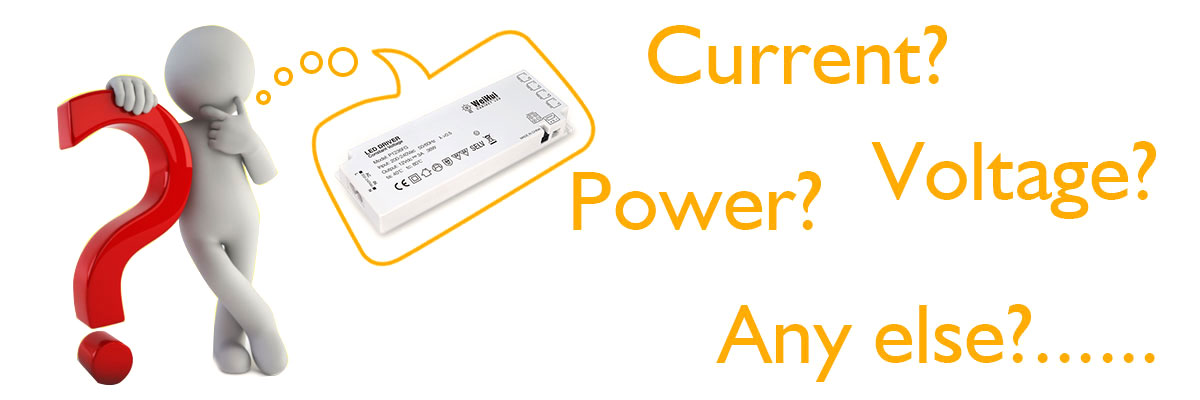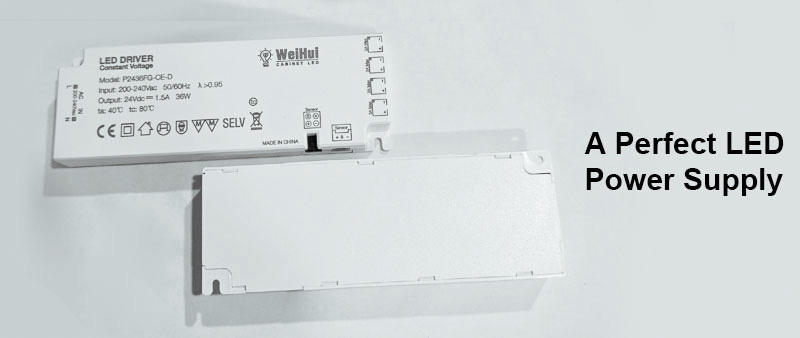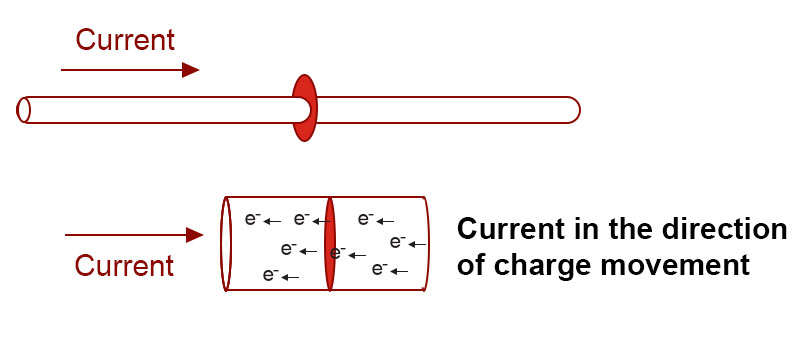To ensure that LED lamps work properly and perform at their best, in addition to the lamp beads themselves, it is crucial to choose the right LED power supply. A high-quality LED power supply with adapted parameters can not only ensure stable lighting and extend the life of the lamp, but also avoid flickering, heating, burning and other problems. So, how to choose LED power supply? Especially voltage, current and power, you must understand them clearly. Today, we will comprehensively analyze these three core parameters for you to help you choose the most suitable LED driver.

Ⅰ. What is LED power supply?
LED power supply is a kind of power supply. It is a device that provides power to electronic devices and is also a power supply. It is a device that converts AC power into DC power through a transformer and a rectifier. This device is called a rectifier power supply, that is, it is driven by a "transformer + rectifier + voltage regulator" module. This module is also called a driver power supply. Its main function is to convert the mains power (usually AC220V) into the DC constant voltage (usually 12V/24V) or constant current output required by LED lamps, and keep the output stable to avoid current fluctuations and burn out the lamp beads. LED lamps usually have high requirements for power supply, so choosing the right LED power module is the key to ensure their normal operation.

Ⅱ. How to choose voltage?
First look at the rated voltage of the light strip/lamp beads
Voltage, also known as potential difference, is the potential difference between two points. In an electrostatic field, voltage is the work per unit charge required to move a charge from one location to another.
Different types of LED lamps have different requirements for voltage. There are two common working voltage specifications: 12V and 24V. Some specific products also use 5V, 36V or even higher voltages. When choosing a power supply, first confirm the rated voltage of the LED lamp and ensure that the power supply output voltage matches the LED lamp.
Suggestions for purchasing LED power supplies:
(1) Check the rated working voltage of the lamp. Qualified power supplies will have corresponding labels, instructions, etc.
(2) The LED adaptor output voltage must be exactly the same as the lamp voltage. For example, if your LED lamp is rated at 12V, then you need to choose a Constant voltage power supply with an output voltage of 12V. If the power supply voltage is too high, the LED lamp may be damaged; if the voltage is too low, the lamp may not work properly.
Note: Voltage mismatch can cause the lamp to not light up, flicker, or even burn out!

Ⅲ. How to choose current?
Distinguish between constant voltage or constant current
Current is the directional movement of charged particles. It is defined as the amount of charge flowing per unit time, usually in amperes (A). The operating current of LED lamps is usually between a few hundred milliamperes and a few amperes. When selecting a power supply, you need to determine the output current of the power supply based on the rated current of the LED lamp. For example, if the current of your LED lamp is low at 1A, then you should choose a power supply with an output current of at least 1A. To ensure the stability of the power supply, we recommend that you choose a power supply with an output current slightly higher than the LED lamp requirement, so as to avoid power overload.
There are two basic types of LED driver power supplies:
(1) Constant Voltage (CV): Output fixed voltage (usually 12V or 24V), current varies with load, commonly used in LED light strips, low-voltage lamps, etc.
(2) Constant Current (CC): outputs a fixed current (such as 350mA, 700mA, 1500mA), and the voltage is automatically adjusted according to the number of loads. It is commonly used for cob led strip lights, panel lights, spotlights, etc.
Suggestions for purchasing LED power supplies:
(1) Check whether the lamp is a constant voltage or constant current type
(2) The constant current power supply must match the rated current of the lamp, with an error of no more than ±5%

IV. How to choose power? -- Calculate by total power * 1.2 times
Power refers to the energy transferred or converted per unit time, which is used to measure the speed of work done by the system. Under the International System of Units (SI), its unit is Watt (W). Power is a very important parameter when selecting an LED power supply because it directly affects the performance of the power supply and the brightness of the LED lamp. Power (W) determines how much load the power supply can drive. However, when choosing a power supply, we recommend choosing a power supply with a power greater than the actual demand of the LED lamp to ensure that the power supply can work stably. When the power selected is less than the total power of the LED fixtures, the power supply is prone to heat up, shorten the life, or even not light up; if the power supply is too high, it will cause cost waste. Therefore, we recommend a power supply with a 20% margin.
For example: if you have 5 LED strip lights with a total power of 50W, then the power supply we recommend is ≥50W × 1.2 = 60W, that is, it is best to use a 60W power supply to drive these 5 LED strip lights.

V. Summary
When selecting a power supply, please keep the following points in mind:
1. Voltage matching: The power supply voltage must be consistent with the rated voltage of the LED lamp;
2. Current matching: Constant voltage power supply focuses on output power, and constant current power supply focuses on output current;
3. Sufficient power: The LED power supply needs to reserve 20% of the power to avoid long-term full-load operation.
In addition to voltage, current, and power, the following points are also important: For example, the waterproof level, IP65 or above is recommended for outdoor or kitchen use; certification standards, CE, UL, RoHS and other certifications are required to ensure safety; strobe control, strobe power supply can protect eyesight and improve the user experience; whether to dim, if dimming is required, please choose a power supply that supports dimming; the input voltage range supports AC85-265V, which is more suitable for global mains power environments.

Choosing a suitable LED power supply is equivalent to installing a stable and reliable "heart" for the lamp. Want a more stable and professional LED lighting solution? Welcome to contact Weihui Technology, we focus on LED cabinet lights, power supplies and smart switch products, and provide you with safe, efficient and customized lighting support!

Post time: Jul-31-2025







